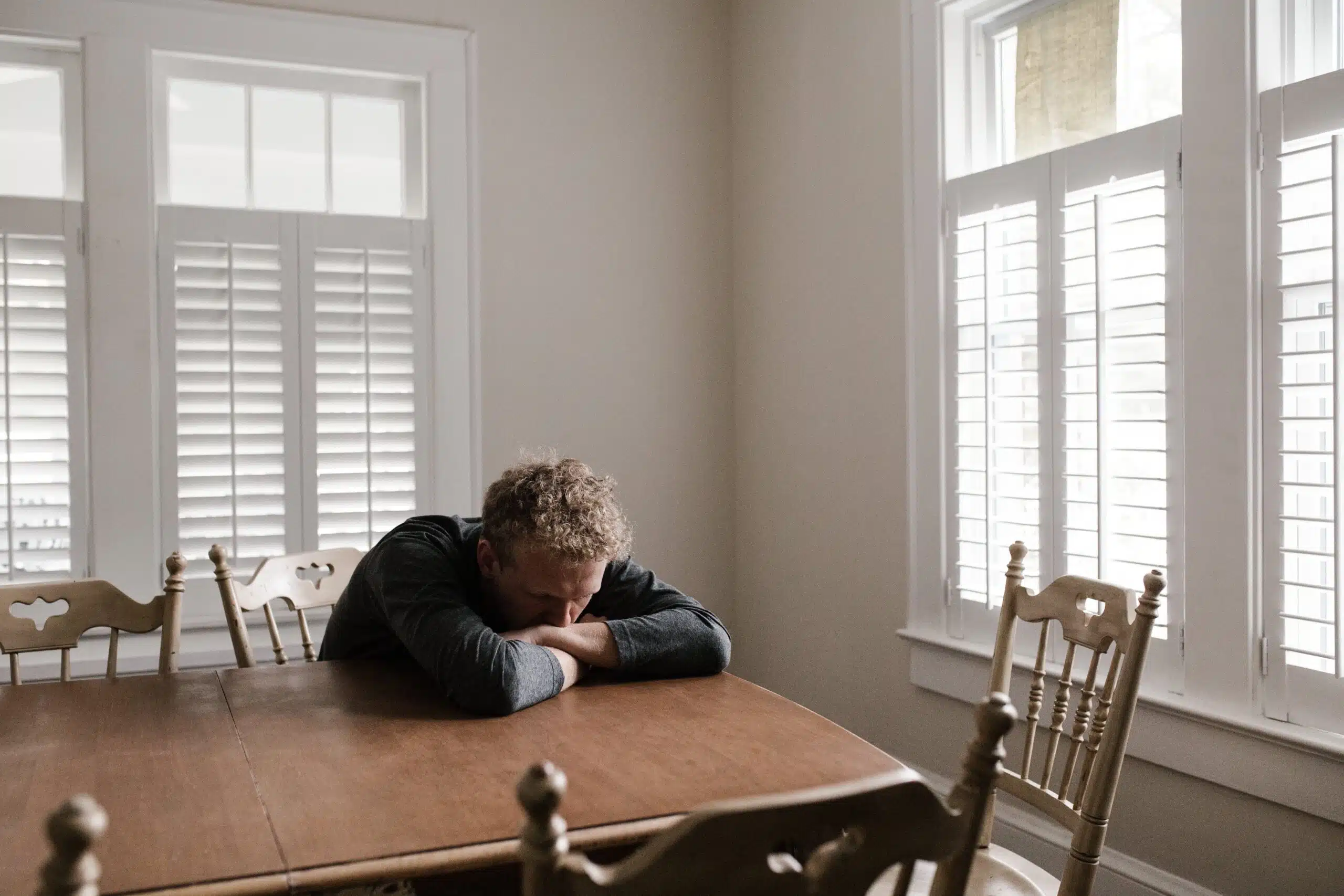Have you ever had a headache? The answer is likely a yes, with research demonstrating that 95% of the general population have experienced a headache at some stage in their life, and around 50% of adults over the past year (Stovner et al., 2007).
A headache often feels like a painful sensation in any part of the head, ranging from sharp to dull, that may occur with other symptoms. Some of the more common triggers for headache are lifestyle related, such as poor diet, stress, muscle tension, and lack of exercise. Serious underlying disorders, such as brain tumours, are rarely the cause of headache, although persistent headache should always be investigated by a doctor. However, for someone like Alex struggling with health anxiety, the onset of a headache in isolation isn’t just a temporary discomfort; it is a catalyst for a spiral of worry of something more severe. Alex wonders a terrifying thought, “What if I have a brain tumour?”.
In an attempt to understand and alleviate their fears, Alex turns to Google. They type in their symptoms, searching for an explanation. What they find, however, are lists of symptoms associated with brain tumours, many of which seem to match their own experience. This process is known as cyberchondria – the compulsion to search the internet for health information, which often results in increased anxiety about one’s health. The more Alex reads, the more they become convinced that their headache is indicative of a brain tumour.
Seeking reassurance, Alex books an appointment with their General Practitioner (GP). The GP conducts a thorough examination and concludes that Alex’s headache is likely due to dehydration, a common and easily remediable cause. For a moment, this professional opinion offers Alex some relief.
However, the worry isn’t entirely allayed. Despite the GP’s reassurance, Alex can’t shake off the worry that the headache might still be a sign of a brain tumour. This persistent fear, even in the face of medical reassurance, is indicative of hypochondriasis (also known as illness anxiety disorder). It’s a condition where a person remains excessively worried about having a serious illness despite medical evaluations and reassurances.
Alex finds themselves trapped in a vicious cycle. The persistent worry drives them to seek more information online, exacerbating their cyberchondria. Each new search brings up more information about brain tumours, feeding into their hypochondriasis. Even minor symptoms or normal bodily sensations start to be interpreted as signs of something sinister. This cycle of cyberchondria and hypochondriasis can become all-consuming, leading to significant distress and impacting daily life. The constant search for reassurance and the inability to accept medical assessments create a state of ongoing anxiety. Thus, it is imperative that Alex seeks psychological support to help break free of this cycle.
Understanding Health Anxiety
Health anxiety is non-trivial; it affects a significant proportion of the Australian population (approximately 5.7% across the lifespan) (Sunderland et al., 2013). In the case of health anxiety, individuals often experience real physical symptoms – such as pain, dizziness, or heart palpitations – that are not attributable to a physical illness. These symptoms are not imagined; they are real sensations, but they stem from psychological rather than physiological causes. The stress and anxiety associated with health anxiety can trigger or worsen these symptoms, creating a feedback loop (as we have seen with Alex) where the physical sensations reinforce the health anxiety, and vice versa. Health anxiety manifests in various forms. It’s not just the fear of severe illnesses like tumours but also concerns about everyday symptoms being signs of serious conditions. Some individuals, for instance, may interpret gastrointestinal discomfort as a sign of a chronic disease, while others may view a persistent cough as an indication of lung cancer. These fears can extend to almost any bodily sensation, turning normal bodily functions into sources of distress. This anxiety persists despite medical reassurance and often leads to frequent doctor visits and medical tests, which typically show no underlying physical illness that can be medically explained. The fear and preoccupation with having a serious illness can be debilitating, affecting daily functioning and quality of life.
Alex’s journey, from worrying about a headache to manifesting debilitating health anxiety requires an understanding of the deeper psychological factors contributing that maintain their distress. This journey isn’t just about alleviating symptoms; we seek to understand the function of the repetitive thoughts that catatrosphise physical sensations including do they operate as persistent distractions from everyday functioning or do they have a punitive element that results in can contribute to the individual experiencing marked distress.
Unconscious Conflict and Symbolisation
Certain physical symptoms in health anxiety, like a headache, can become a symbolic representation of internal, unconscious conflicts. Unconscious feelings can be internalised resulting in physical suffering in the body. We seek to help individuals to understand and connect with the emotions underneath the physical sensations, rumination and worry.
A person might unconsciously associate a headache with an unacceptable feeling of vulnerability or loss of control, which could be linked to deeper concerns or unresolved emotional issues. The fear of a brain tumour, then, becomes a concrete physical expression of these abstract psychological anxieties.
Defense Mechanisms: Rumination, Displacement, Self Attack and Somatisation
We seek to understand the function of the person’s overthinking and worry about health issues. For example, constant thinking about physical symptoms and illness may provide a distraction from relationships and events that are triggering anxiety-provoking feelings.
Repetitive thoughts about a serious illness like a brain tumour can be seen as a form of displacement where anxiety related to one issue is unconsciously shifted to another. The individual may find it more acceptable to focus on the worry relating to a physical illness rather than confronting the underlying emotional distress.
Having repeated thoughts that there is a serious health issue can be very punitive and is also a way that anxiety-provoking feelings generated in a relationship get channeled back into the individual; the feelings and anxiety are avoided but in a way that ‘attacks’ the person.
Sometimes accompanying the concern about health issue are additional thoughts that unless specific thought patterns are followed, or unless particular behaviours are engaged in, something dire will happen to the person or to another person. This also tends to have a very punitive element to it and can result in Obsessive-Compulsive Disorder (OCD).
Somatisation may play a role – the process of unconsciously converting emotional distress into physical symptoms in the body. The headache, while a real physical sensation, may be intensified or maintained due to underlying psychological factors.
The Role of Psychotherapy
In the context of psychology and counselling, understanding the psychophysiological basis of health anxiety is crucial. Therapeutic approaches often focus on breaking the cycle of anxiety and physical symptoms by addressing the cognitive distortions (like catastrophic thinking) and helping the individual develop coping strategies. Techniques such as cognitive-behavioral therapy (CBT), mindfulness, and relaxation exercises can be effective in managing the symptoms and anxiety. The therapeutic relationship also provides a supportive environment for exploring and understanding the root causes of anxiety and developing healthier ways to cope with stress and uncertainty about health.
Dynamic and experiential therapies such as Intensive Short-Term Dynamic Psychotherapy (ISTDP) are considered effective for treating health anxiety and its related obsessive-compulsive behaviours by focusing on underlying emotional issues and internal conflicts. Research has indicated that these positive changes are able to be sustained in long term follow-up due to addressing the unconscious difficulties that present as symptoms in conscious awareness; moving beyond from just coping with health anxiety to a place of deeper healing (Abbass et al., 2021). This is worked through with an emphasis on the therapeutic relationship, which might look like:
1. Identifying Hidden Emotions: ISTDP helps people recognise and confront suppressed emotions (like anger, guilt, or grief) that are often at the heart of their health anxiety.
2. Understanding Internal Conflicts: The therapy explores deep-rooted internal conflicts (e.g., fear of abandonment) that might be driving the obsessive need to check for symptoms or research illnesses.
3. Breaking Down Defence Mechanisms: It helps individuals understand their health anxiety behaviours (like constant checking) as defence mechanisms against facing these difficult emotions.
4. Processing Emotions: ISTDP involves actively working through these uncomfortable feelings in therapy, helping to break the cycle of avoidance and compulsion.
5. Building Awareness and Healthier Coping: Through this process, individuals become more aware of their triggers and learn healthier ways to manage their anxiety, reducing their reliance on obsessive and compulsive behaviours.
In essence, ISTDP addresses health anxiety by helping people deal with the emotional root causes of their behaviours, leading to more effective and long-lasting management of their symptoms.

